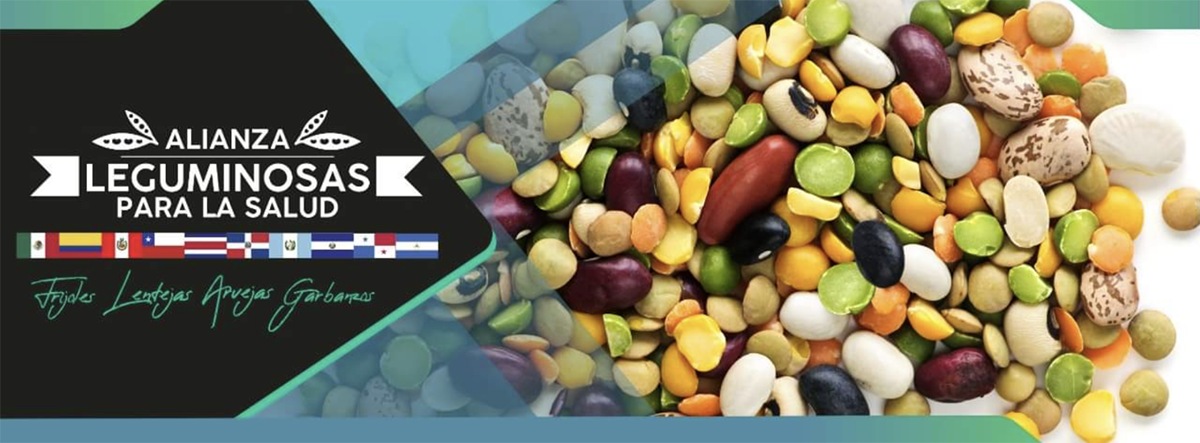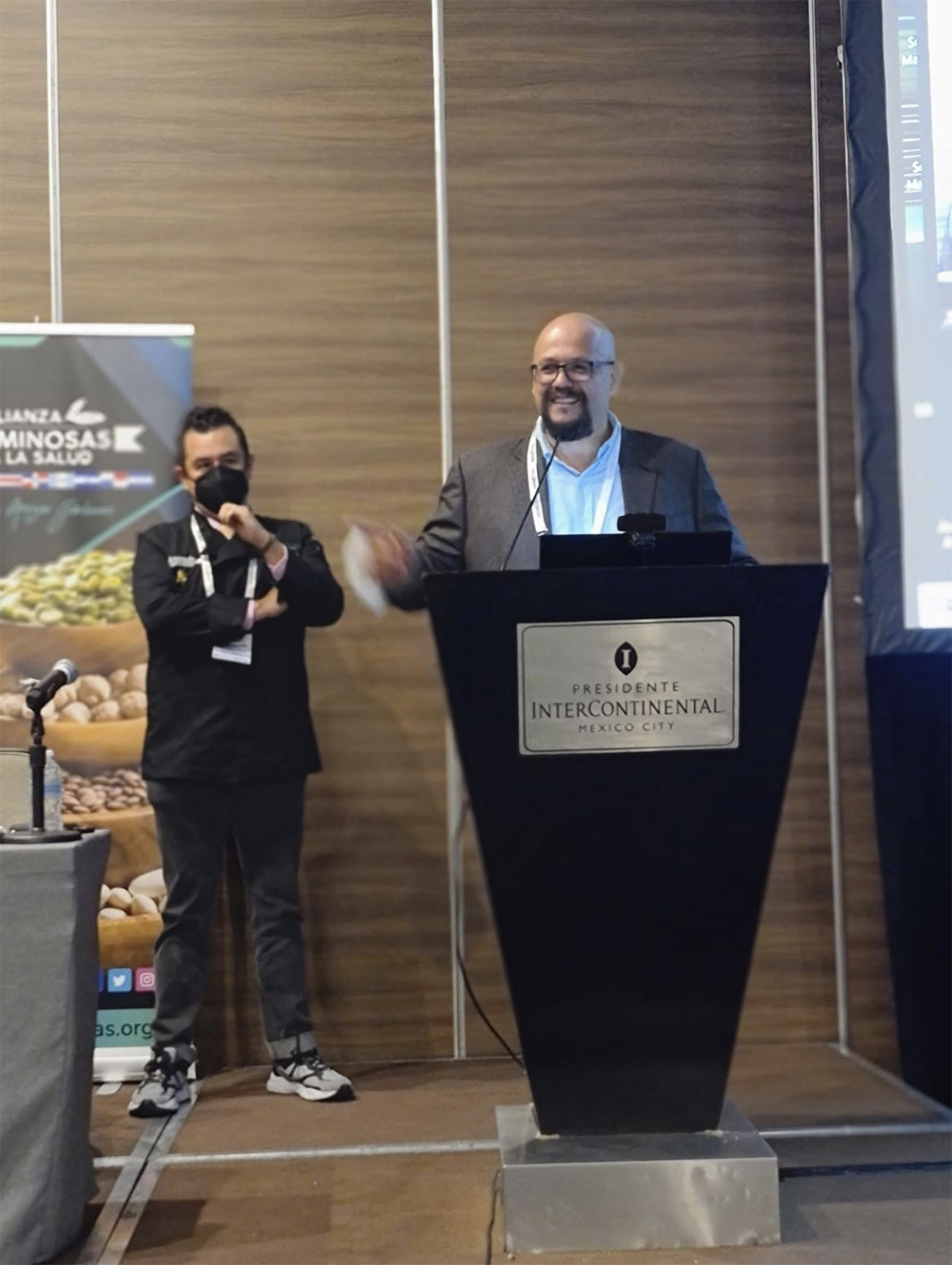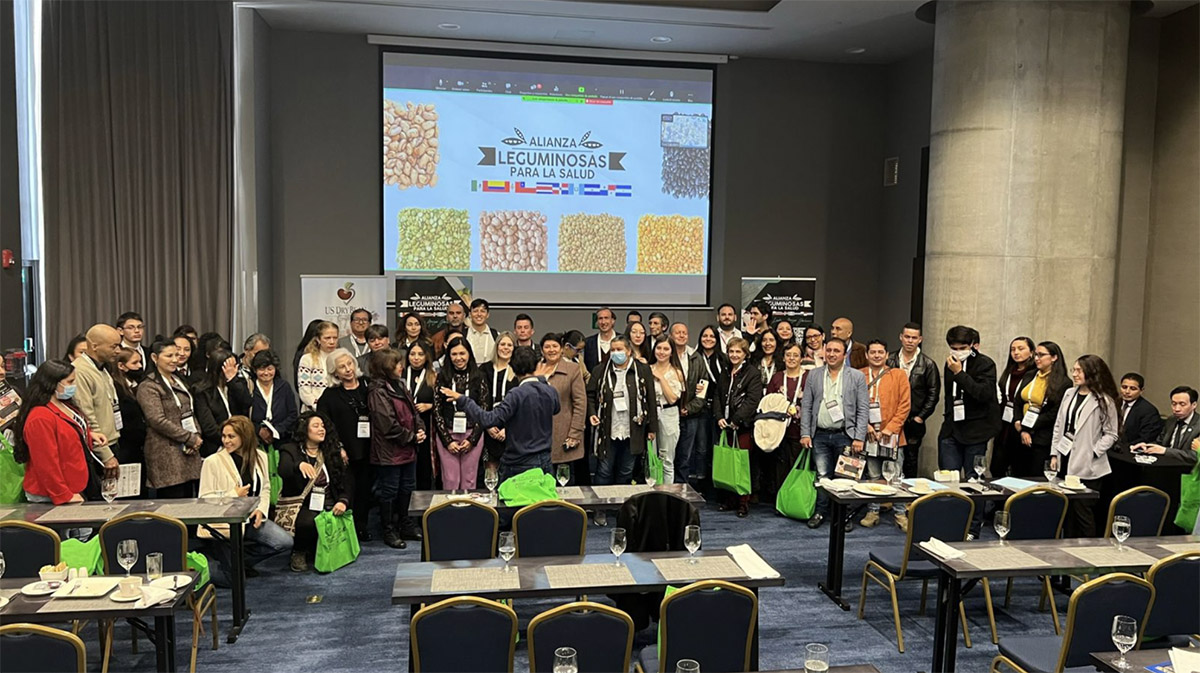October 11, 2022
A joint effort between USDBC and USA DPLC, Alianza Leguminosas aims to raise awareness of the benefits of pulses as a way to tackle issues of obesity and malnutrition in Latin America. Luke Wilkinson reports.


The oldest cultivated beans have been traced all the way back to 8000 BCE in the rocky highlands of Peru. The discovery gave us a glimpse into the ancient communities of Latin America and into a fundamental truth: that for 10,000 years or more, people on the continent have fed themselves and their loved ones with pulses.
With such strong roots, the hardy, nutritious pulse stands firm in Latin American cuisine, even today. However, even diehard pulse fans can’t deny that people are eating them less frequently than previous generations.
Raul Caballeros, of Alianza Leguminosas Para La Salud, may actually be one of the biggest fans of pulses. With 25 years in the industry, he is the association's representative for the project, which is a joint effort by the US Dry Bean Council and the USA Dry Pea and Lentil Council. Together, they have embarked on a mission to bring pulses back onto the menu and help keep future generations of Latin America healthy.

Raul Caballeros at the Mexico City Alianza Leguminosas Conference - March 2022
“Alianza Leguminosas (The Pulses for Health Alliance) is a project with the goal of increasing pulse consumption in order to tackle malnutrition,” explains Caballeros. “Part of the initiative is to help Latin Americans see the value of the pulses, which already form such a big part of their diet. In Mexico, beans are always on the dinner table but we want to show the consumer how important those beans are from a nutritional perspective.”
Across Latin America, obesity has become epidemic as a result of sugary drinks and the proliferation of ultra-processed foods. Diets have become unhealthy and multiple governments, including those of Mexico and Chile, have begun using taxation and market regulation to discourage the sale and consumption of unhealthy food and drinks.
These issues are at the core of Alianza Leguminosas’ international mission; the alliance covers Central and South America, including Mexico, Colombia, and Peru, among a growing list of other Latin nations.
But dealing with the vast, often institutional issues of malnutrition will be no easy feat. How will the project set about making changes?
“Firstly, we want to create interaction between the various industries aimed at improving people’s health; we’ve brought together academics in the fields of nutrition, food technology and medicine, as well as public and private health institutions. We also invite health professionals like nutritionists and doctors.
“We launched a virtual training program last year that was a real success, even though it couldn’t be held in person. In April this year we were in Mexico; in May - Peru, then Colombia in June. We set up talks from food engineers, nutritionists, and doctors to give presentations detailing the advantages of pulses from a nutritional and medical perspective.”

Conference in Bogotá June 2022
The project has been well received on its travels. One example is the Peruvian government, who embraced the project right away, providing support, promotion and a venue in which to conduct the presentations.
Some Latin American governments (Chile, Peru, Uruguay, Mexico, Colombia, now Argentina) have established front of pack labeling with octagons or circles that state the high contents of harmful ingredients such as sugar, fat, and sodium. This measure has been established to help consumers judge products by their contents and to help them make informed choices. In some countries like Mexico, pulses used as added-value ingredients such as fibers or isolated proteins have been used to reduce the harmful ingredients and add nutritional value.
In addition, Alianza Leguminosas para la Salud is working to promote added value foods that contain pulse ingredients such as flours, fibers or isolated proteins.
Caballeros speaks passionately about the importance social networks will have in achieving their goal of better health outcomes through pulses. Any food movement must embrace modernity - appeal to our eyes and appetite. This, he says, is where the alliance’s collection of more than 200 pulse-based recipes come into play:
“We’re getting in touch with chefs and industry cooks to bring fresh, varied recipes that think outside the box. This way we can show the infinite possibilities for pulse preparation and consumption.”
These Lentil Croquette Kebabs and the Teriyaki Chickpea Sushi Bowl are testament to this culinary creativity, while appealing to the younger, more health-focused generations. Knowing how to cook pulses will be an important building block in the push for healthier, pulse-forward diets, which is why members from the food service industry receive a technical bulletin from the alliance (available on subscription) detailing the methods and techniques needed to cook and get creative with legumes.
In the end, Alianza Leguminosas Para La Salud is about reaching new audiences for a fresh vision of Latin America’s age-old staple. Once seen as humble foods; beans, peas, lentils and chickpeas are now exciting, flagship ingredients in the trend towards a more modern, plant-based, and ecologically friendly food industry.
“Millennials and Gen Z are much more conscious of the environment,” says Caballeros, “so we’re lucky to have a product with the perfect qualities to convince those consumers; pulses are not only good for all of our health, but for the health of the planet as well.”
In this sense, Alianza Leguminosas is spreading the word that, despite being one of Latin America’s most ancient foods, the power of pulses is here in the present, and that through heart-healthy diets and the plant-based boom, they can be a vital, potentially revolutionary part of the continent’s future.
——
Alianza Para La Salud is open to subscriptions here. Learn more about their recipes on their Facebook and Instagram.

Raul Caballeros / Alianza Leguminosas Para La Salud / US Dry Bean Council / USA Dry Pea and Lentil Council
Disclaimer: The opinions or views expressed in this publication are those of the authors or quoted persons. They do not purport to reflect the opinions or views of the Global Pulse Confederation or its members.